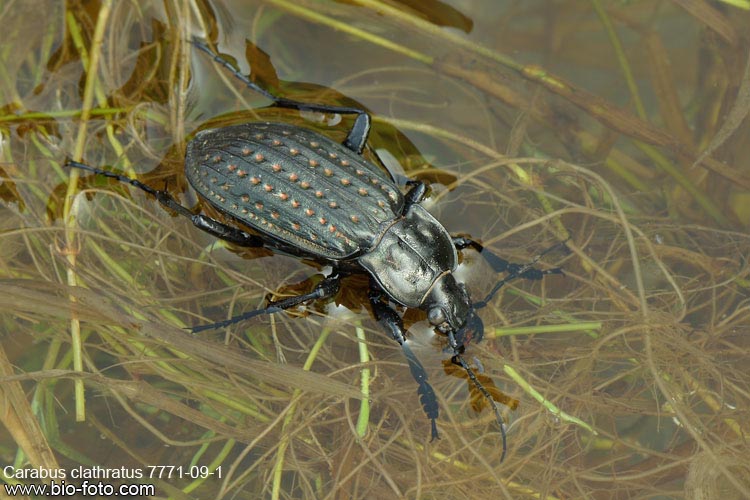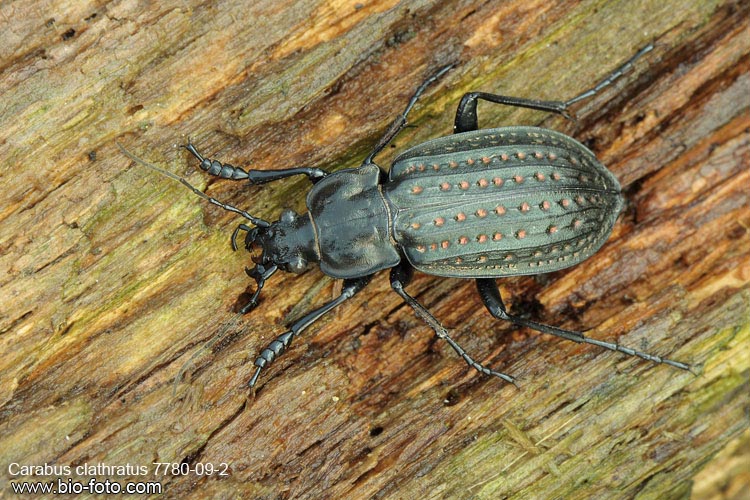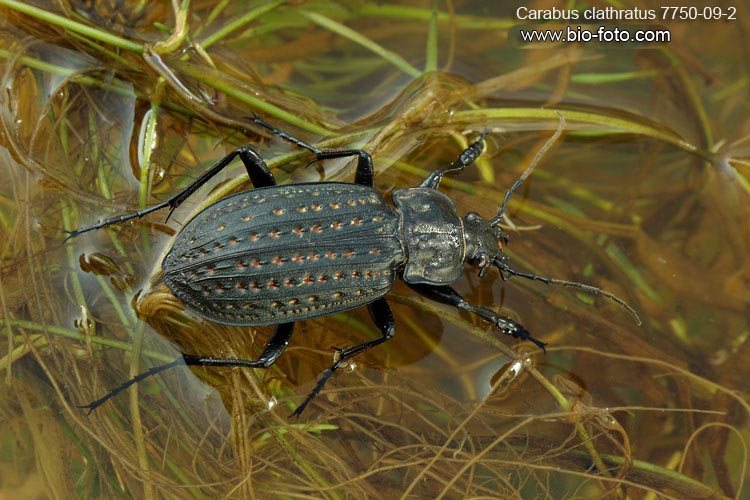Carabus clathratus
Shore beetle ( Carabus clatratus )
The riparian ground beetles ( Carabus clatratus ) is a kind of genuine beetle ( Carabus ).
Features
The Shore beetle reaches a body length of 25-36 millimeters, and thus one of the major species of beetle in Europe. His body is copper-colored, greenish or black in color and has large shiny, coppery or greenish shimmering mines between distinct secondary ridges on the wing covers ( elytra ) on.
The Shore beetles can be one of the few Carabus species have fully developed wings and is then capable of flight. This is usually only a small proportion of the population, most copies have reduced hind wings. In Central European and Asian populations macroptere animals probably missing entirely.
Dissemination
The beetle is found in large parts of Europe with a focus on Eastern Europe. It is missing in the far north and south, in the Alps, in the Iberian Peninsula and in large parts of France, Italy and Great Britain. To the east, its spread over Siberia, Central Asia, even as far as Korea and Japan.
In Germany, its distribution is limited to the northern half. In greater frequency it exists only in Lower Saxony, Mecklenburg -Western Pomerania and Brandenburg.
Way of life
The Shore beetle lives primarily in wetlands and the landing areas of swamps and bogs and in wet salt marshes. There you will find him in the wet dead wood, usually willow stumps and moss mats.
He is a mostly nocturnal predators, hunting similar to the pit ground beetle ( Carabus variolosus ) under water for snails, small crustaceans, insects and their larvae, tadpoles and even small fish. He is a fresh air supply under the elytra. The larvae are able to hunt under water.
You can meet the beetles from April to September, the breeding season is in the spring and the young generation hatches in September.
Threats and conservation
Since the beetle is very strongly tied to moist to flooded habitats, it is mainly threatened by the decline and the draining of wetlands and pushed back. This makes it regionally rare and was placed nationally in many European countries under protection.
- Red List of Germany: 2 ( endangered )
- Red List of Mecklenburg- Vorpommern: 3 (endangered )

.jpg)








